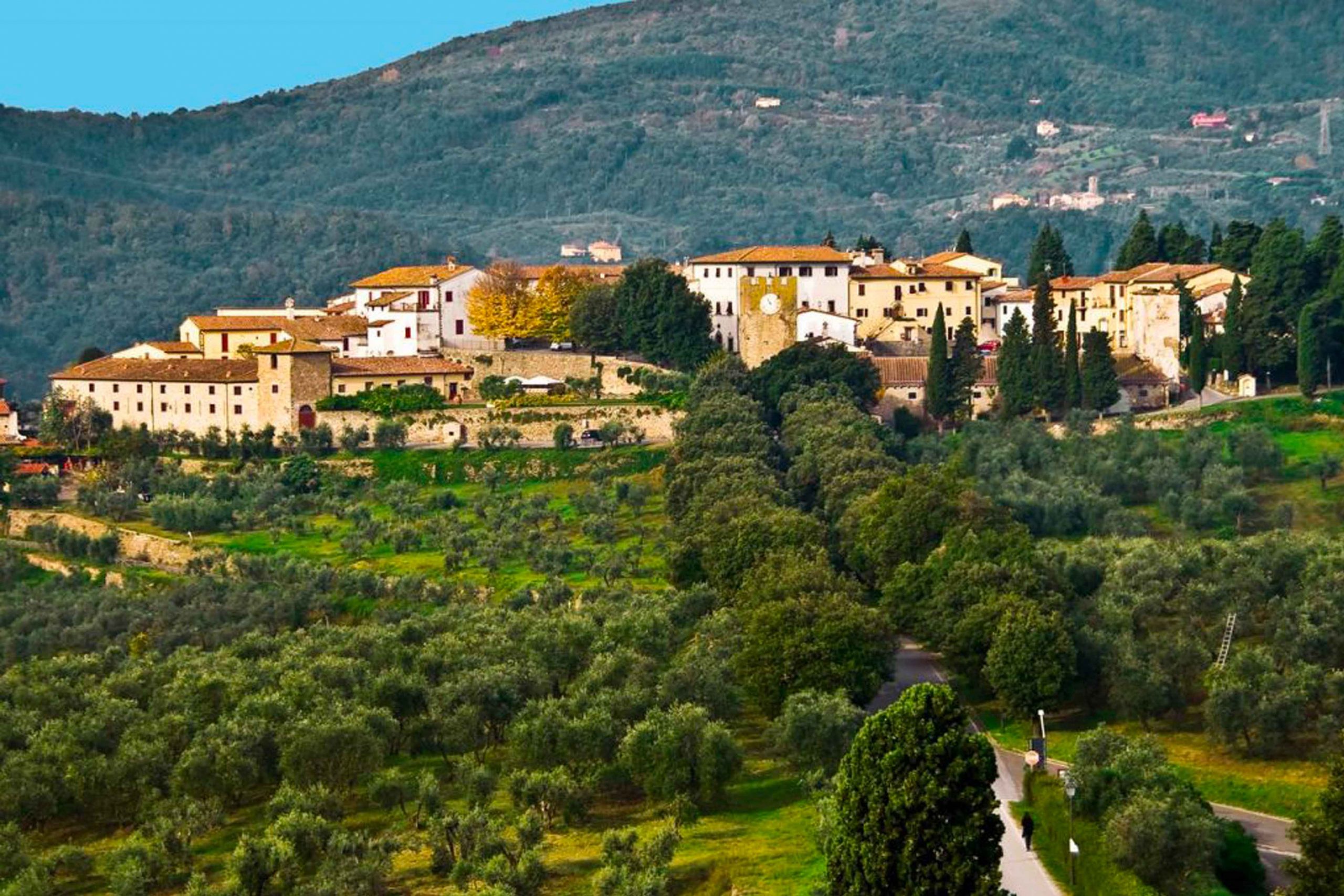The parish of Artimino appears in a charter of 998 properties between the Emperor Otto III confirmed to the Diocese of Pistoia. The presence of a baptismal church testifies definitely and unequivocally a demic presence of no small importance. The studies in this area in the last forty years and still in progress have shown that the attendance of this land is far older: between VIII – VII century BC Artimino was chosen, in fact, as their location by the Etruscans who first recognized it and knew the happy position: “between Signa and Capraja the summit of a hill spread from the southern flank of Mount Albano, wet north and east by the river Elsana or Erzana, and the river Ombrone, while the south wind and ostro Arno furrows around his foot. This hill presents itself as a bastion at the top of the narrow (Arctus) of Gonfolina “, (Repetti Dizionario Geografico Fisico Storico della Toscana.)
Roman first station – a coin of Galata, 60 AD found in the area and some toponyms of Latin origin would confirm this hypothesis – was in the early centuries border castle of the city of Pistoia. It was long disputed between the Republic of Florence and Pistoia, who aspired to obtain the precious outpost, near Val d’Arno Lower key, albeit temporarily and obtained the domain in 1204. In 1219 again passed under the dominion of Pistoia, but only up to 1225, when again passed under the dominion of Florence.
The small village rebuilt and fortified by Castruccio Castracane in 1327 was again the scene of a bloody battle after which brought the village back in the hands of Florence.
In the agreement signed between Florence and Pistoia is established that the castles of Artimino, Carmignano, Castellina di Limite Vitolino are governed half by the Guelph and half by the Ghibellines. The district political Artimino then added together to the Florentine people which bore the emblem of a sea dragon, the Florentine lily. The long period of peace that followed gave rise to a forfeiture of the castle.
It is said that around 1594 the Grand Duke Ferdinando I, going to hunt his Barco in the Monte Albano, just arrived on the hill of Artimino has told his architect, Buontalenti: “Bernardo intorno a questo luogo appunto, ove tu mi vedi, io voglio un palazzo che sia sufficiente per me e per tutta la mia corte; or pensaci tu, e fa’ presto“.
The Villa was built in a short time between 1596 and 1600: the Ferdinanda called by the name of the Grand Duke, or even of “a hundred chimneys” because of its many forms and shapes of chimneys deliberately diverse.
Above and beyond the Castle, overlooking the Villa, stands the church of San Leonardo and Maria , same church that Otto III mentioned in his diploma. Initially dedicated to the Virgin was enlarged at the beginning of the twelfth century by the Countess Matilda. Addition to the dedication of St. Leonard was in the sixteenth century.
Artimino has always been among its wealth of a prestigious wine the Medici family already sent as a gift prestigious around the world to dignitaries and ambassadors, and that Francesco Redi in his dithyramb thus celebrates: “Benedetto / quel Claretto / che si sprilla in Avignone, / questovasto Bellicone / io ne verso entro ‘l mio petto; ma di quel, che si puretto / si vendemmia in Artimino / votrincarne piu d’un tino / ed in si dolce e nobile lavacro / mentre il polmon / mio tutto s’abbevera, / Arianna, mio Nume, a te consacro / il tino, il fiasco, il botticin, la pevera …”





